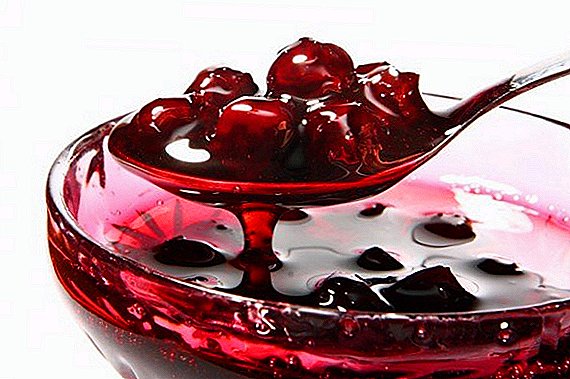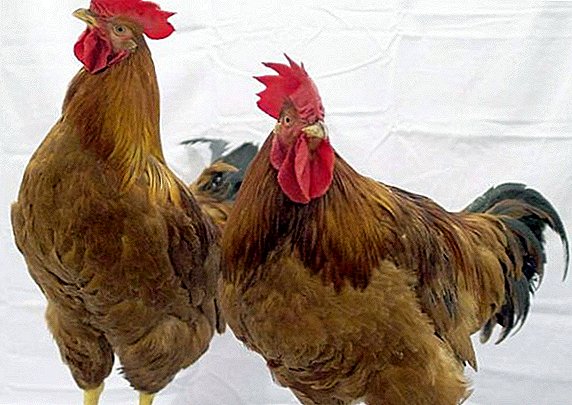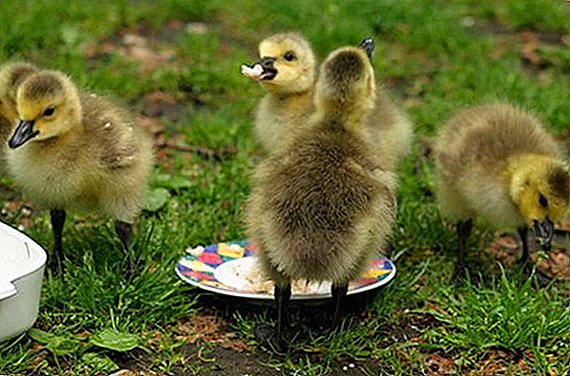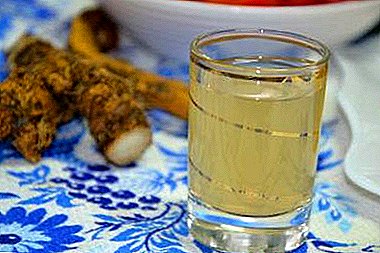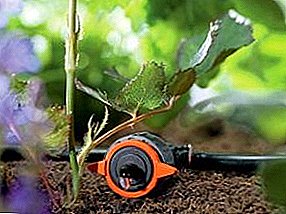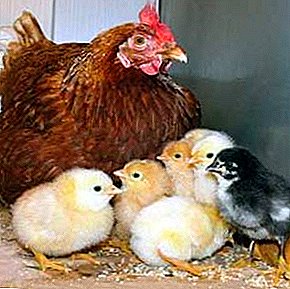
Avitaminosis E - a disease that is characterized by a lack of the same vitamin.
This vitamin is differently called the reproduction vitamin, since it plays an important role during the formation of the embryo and sexual characteristics in the maturing bird.
That is why its deficiency almost immediately affects the reproductive function of the individual.
What is vitamin E avitaminosis in chickens?
Avitaminosis E is always manifested in the case of a lack or complete absence of this useful chemical in the chicken's body.
It is precisely known that vitamin E is always involved in all redox reactions occurring in the body of the bird, as well as in fat, carbohydrate and protein metabolism. Without this vitamin, normal assimilation of food and useful trace elements from it will become impossible.
Also, vitamin E is inherently a natural antioxidant, protecting any fat-containing chemical compounds from oxidation.
Degree of danger
 Vitamins, as well as their role in the body of poultry, have been studied relatively recently by experts who are engaged in the study of these chemicals.
Vitamins, as well as their role in the body of poultry, have been studied relatively recently by experts who are engaged in the study of these chemicals.
Now we can say with certainty what vitally important processes are responsible for vitamin E.
Like any other type of avitaminosis, this type of disease does not manifest itself immediately, therefore, it is possible to determine whether a bird is sick, only after the first symptoms appear.
It has been determined by veterinarians that a lack of vitamin E in the chicken’s body can manifest itself in a few weeks. During this period of time, birds should receive poor-quality food so that the first symptoms begin to manifest.
Due to the fact that vitamin E avitaminosis has a detrimental effect on the reproductive function of the entire herd, the farm immediately begins to incur losses. Laying hens lay fewer eggs, and puberty slows down significantly, so the livestock reproduces very poorly.
Luckily, avitaminosis E in the early stages is well treatedtherefore, you should try to notice the first symptoms as early as possible in order to prevent possible damage in time.
The reasons
 Avitaminosis E develops in the body of chickens due to the lack of the same vitamin.
Avitaminosis E develops in the body of chickens due to the lack of the same vitamin.
Usually the cause of any type of beriberi is the systematic malnutrition of young and adult birds.
Avitaminosis E is diagnosed in birds that receive an insufficiently large amount of it along with food.
Another probable reason for the lack of vitamin E in the body of a chicken is vitamin C deficiency. The fact is that vitamins E and C are closely related to each other by chemical reactions. Vitamin C is involved in the synthesis of substances that prevent the excessive oxidation of vitamin C. That is why the lack of the latter becomes the cause of vitamin A deficiency.
Also on the concentration of this vitamin in the body of poultry diseases of the reproductive system may be affected. During their course, the poultry organism needs a larger amount of this vitamin to recover, so after a certain period of time its deficiency begins to be felt.
Course and symptoms
With systematic improper feeding in chickens, conversion of methionine to cystine is slowed down. This leads to muscular dystrophy in young, which begins to grow slowly and gradually weakens. In the liver in young birds, the concentration of linoleic and arachidonic acid decreases, which is reflected in the state of membrane formations.
Also chicks may develop food encephalomalacia due to a lack of vitamin E. The disease manifests itself from the age of 19 days, and its peak activity falls on the 4th week of the chickens life.
The young growth ceases to move normally, it cannot rise from its place. He lies on his side or back, stretching his limbs and twisting his fingers on them. In this case, the head is strongly drawn out or turned to the side.
Sick chickens cannot walk well, as coordination of movements suffers. After some time, the chicks have cramps in the head and limbs, which occur due to numerous hemorrhages in the cerebellum.
In addition, exudative diathesis is observed in young chickens. The peak of the disease accounts for 2-4 weeks of age. In some cases, this disease can occur in adults. It can be identified by numerous swelling in the head and neck, swelling on the chest is also observed. These places gradually become blue and painful, and then they turn black.
 Beautiful Milfleur chickens have several types of color. You can see their photos on our website.
Beautiful Milfleur chickens have several types of color. You can see their photos on our website.How to prevent avitaminosis D in chickens, has long been described on this page: //selo.guru/ptitsa/kury/bolezni/narushenie-pitaniya/avitaminoz-d.html.
Sick chickens gradually lose interest in food, and in a more advanced form of the disease they completely abandon it. Due to exhaustion, they cannot walk, so they constantly sit in one place.
An insufficient amount of vitamin E in the layer feed can lead to a high embryo mortality in the first few days after the start of incubation. Fortunately, this vitamin does not affect the number of eggs laid, so the egg performance of the birds does not suffer.
Diagnostics
 The diagnosis of avitaminosis E is made after studying the overall clinical picture, data autopsy dead birds, as well as analysis of the feed, which took the birds to their death.
The diagnosis of avitaminosis E is made after studying the overall clinical picture, data autopsy dead birds, as well as analysis of the feed, which took the birds to their death.
This always takes into account the quality of the content of chickens, as well as the presence of possible infectious diseases.
To accurately determine that livestock suffers from avitaminosis E, veterinarians take on the analysis of feed, which birds consumed, as well as examine the liver and eggs for the presence of tocopherol.
Normally, the concentration of vitamin E in the yolk should be from 70 to 200 µg / g, in the liver of adults - 16 µg, in the liver of the young - 20 µg.
A blood test may be performed under laboratory conditions. In the case of an increase in erythrocyte hemolysis up to 11%, it can be said with confidence that chickens suffer from the initial stage of vitamin A deficiency.
Treatment
Avitaminosis E treatment is carried out with the use of increased doses of this vitamin. Sick birds are given fortified supplements, they inject a dose of vitamin that exceeds the norm several times. This is necessary to quickly restore the balance of vitamins in the chicken.
In case of severe muscle damage, sick birds are given 0.12 g of vitamin E per 1 kg of feed, 0.125 g of santokhin, 0.1 g of vitamin C and 1.5 g of metzonin. This mixture helps the birds to recover faster.
As for the treatment of exudative diathesis, not only vitamin E in increased doses is used for this purpose, but also sodium selenite at a dosage of 13 mg per 100 kg of compound feed.
Prevention
For the prevention of avitaminosis E, it is very important that the diet of chickens be enriched with vitamin E. To do this, use the drug granuvit E or any other drugs with an increased content of this useful vitamin. Per 100 kg of feed chicken should receive 1 g of vitamin E.
In addition, it is possible to prevent this type of avitaminosis with the help of a large amount of plant greens, sea buckthorn berries, carrots, and wheat germ flakes. These natural ingredients are well absorbed in the body of poultry, so feeding gives good results.
Conclusion
Avitaminosis E can be a serious cause of impaired reproduction in a flock of chickens. Lack of vitamin E quickly affects the state of embryos in eggs and sperm in roosters, which prevents normal reproduction of chickens.
To prevent this, farmers need to monitor the diet of chickens, as well as their condition. This will not only recognize the disease in time, but also help prevent its occurrence among birds.


